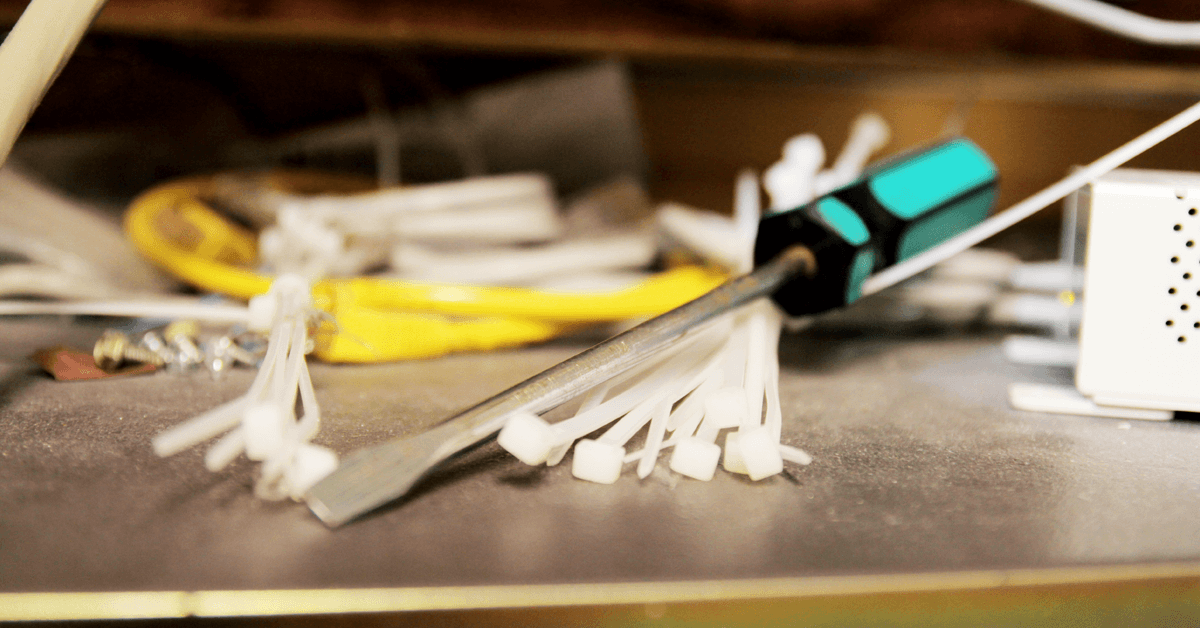The Definitive Electrician Tools List
By Randy Breneman on Wednesday, February 27, 2019Use this list to start assembling your electrician tool kit.
Electricians require a wide variety of specialized tools in order to do their jobs efficiently, effectively, and safely. Whether you’ve just started out and want to assemble your tool kit or you want to create a comprehensive checklist for your service personnel, we’ve compiled a list of the most common tools used by electricians.
Tools of the Trade
Whether working on commercial, industrial or residential electrical projects, electricians commonly use the following tools:
- Multimeter to measure current, resistance, and voltage.
- Tester to tell you whether or not a wire is live.
- Sheet rock saw to help you create space for a new electrical box.
- Wire strippers to remove the rubber insulation from a wire before rewiring.
- Pliers with a built-in crimping tool to help you connect two different wires.
- Metal file for removing burrs or sharp edges on sawed metal in order to prevent wires from getting nicked.
- Diagonal or side cutters to help you make cuts in hard-to-reach places.
- Electrical tape in a variety of colors to help you code wires.
- Utility knife for miscellaneous cuts.
- Code reference and calculation guide for when you need to double-check your figures.
- Magnetic level with 45 and 30 degree angles.
- Zip ties to help organize wires.
- Fishing tools to move wires within spaces without making large cuts.
- Power conduit reamer to remove burrs inside conduits and screw in attachments.
Screwdrivers and Other Drivers
Electricians have many uses for a variety of screwdrivers. A 6-in-1, 10-in-1 or even 12-in-1 screwdriver frees up space in your tool bag while also keeping a variety of heads at your disposal. But you’ll also want these drivers within reach:
- A large, heavy-duty flat head screwdriver. You probably won’t use this often for screws. However, it makes a great prying and poking tool for tight spaces.
- A Robertson screwdriver. Also called a square driver, this tool will allow you to open various electrical panels, which often have square-head screws.
- An Allen wrench set. Choose a folding Allen wrench (hex key) set so that you can quickly choose the correct size you need without losing individual keys.
- An impact driver. When you’re up against a frozen or corroded screw, you need the quick burst of torque provided by an electric driver.
- Nut drivers. Electricians come across 3/8 and 3/4 nuts most often. The 6-in-1 (etc.) screwdrivers often have these two sizes embedded in their design. However, a full set of standalone nut drivers certainly can’t hurt.
- Precision screw drivers. As an electrician, you’ll often have to work in tight spaces. Precision screwdrivers allow you to apply pressure with one finger and rotate the driver with the same hand.
Power Drill and Drill Bits
You never know when you’ll need to do some miscellaneous drilling, and a powerful drill ensures you can do it efficiently. Consider a cordless drill, because the power will likely be shut off wherever you work.
Electricians also need to have the right drill bits for any type of material they come across during the job: wood, steel, concrete, etc. The size of the hole you make can also vary tremendously, from large holes for conduits to small pilot holes for screws.
Make sure you have a collection of drill bits in your tool kit so that you can get through any material and create any size hole. Hole saws, various types of wood boring bits, step bits for thin metals, masonry bits for concrete, and tile bits represent just a small sampling of the types of bits you may need.
Safety Considerations
Every electrician needs appropriate training to understand how to stay safe on the job, and this training should include what types of PPE (Personal Protective Equipment) to wear and use. For example, you’ll need:
- Insulated gloves for avoiding accidental shocks.
- Safety glasses to avoid debris from drilling or even sparks from hot wires.
- Insulated hand tools. If you accidentally touch a live wire, for example, the charge will go through the metal, but won’t reach your hand if the handle is properly insulated.
- A head lamp so you can see what you’re doing, thereby creating a safe working environment.
- A hard hat, depending on the work being done.
- Electrical hazard boots, which use minimal or no metal in their construction to slow down electrical current that may travel up through the ground.
Electrician Software
Working as an electrician, you’ll need the tools listed above tools to do electrical work. Of course, you’ll also need work orders, forms, maps, and scheduling information to help you along the way. If you can convince your dispatchers or managers to implement electrician software, your job will suddenly get a lot easier. Go paperless with an electrician app like iFleet, and you’ll have all the schedules, customer info, work orders, and forms you need on your mobile device.
Conclusion
The types of tools you need as an electrician also depend on your experience. During your first few years as an apprentice, you will primarily assist the journeyman. You won’t need the most expensive tools, but you should certainly have plenty of quality hand tools for basic tasks. As you work your way up the ladder, you should add to your toolkit until you have everything you need.


